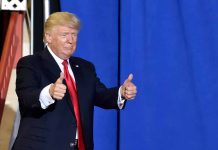
A federal judge has allowed President Trump’s mass layoffs of federal workers to proceed, impacting thousands of IRS employees amid a government efficiency push.
Top Takeaways
- U.S. District Judge Christopher Cooper denied a union motion to block layoffs of federal workers.
- Around 6,700 IRS employees, many on probation, were laid off as part of Trump’s government efficiency initiative.
- The ruling supports Trump’s plan to reduce the government workforce, overseen by the Department of Government Efficiency led by Elon Musk.
- Unions argue the layoffs conflict with Congress’ authority over federal workforce size and procedures.
- The decision comes amid ongoing legal challenges to Trump’s executive orders on federal employment.
Court Ruling Paves Way for Federal Workforce Reduction
In a significant development, U.S. District Judge Christopher Cooper has ruled against a union’s attempt to halt the layoffs of thousands of federal employees, many from the Internal Revenue Service (IRS). This decision aligns with President Donald Trump’s administrative changes aimed at creating a leaner government. The ruling affects approximately 6,700 IRS workers, with many in probationary periods, as part of a broader initiative to optimize government spending.
Judge Cooper denied a motion from unions seeking a temporary restraining order to block the layoffs, citing the need to follow established federal employment law processes. The court determined that jurisdiction for such claims lies with the Federal Labor Relations Authority, effectively allowing the Trump administration to proceed with its planned workforce reduction.
Trump can continue mass firings despite disruption and chaos, U.S. judge rules https://t.co/NtAFmCqCNl
— CTV News (@CTVNews) February 21, 2025
Impact on Federal Employees and IRS Operations
The layoffs have had immediate effects on federal workers, particularly within the IRS. Affected employees say they had little notice before the layoffs occurred, raising concerns about financial hardships. Many of the laid-off workers were part of IRS enforcement teams, a move that comes close to the U.S. tax filing deadline and could potentially impact the agency’s operations during a critical period.
The National Treasury Employees Union, representing many of the affected workers, expressed disappointment with the court’s decision but remains committed to challenging the layoffs through legal channels. Union president Doreen Greenwald emphasized that this setback is temporary and that federal employees will have their day in court to address what they view as unlawful terminations.
Government Efficiency Initiative and Legal Challenges
The layoffs are part of a broader government efficiency push spearheaded by the Department of Government Efficiency (DOGE), led by Elon Musk. This initiative has faced numerous legal challenges, with over 80 lawsuits filed against Trump’s executive orders related to federal employment. The administration argues that these measures are necessary to streamline government operations and reduce costs.
In addition to the layoffs, a mass buyout plan for federal workers was implemented, with over 75,000 employees accepting offers from the Office of Personnel Management. This plan, while temporarily frozen, was later allowed to proceed, further contributing to the reduction in the federal workforce.
Ongoing Debate and Future Implications
The court’s decision has intensified the debate surrounding the Trump administration’s approach to government efficiency and federal employment. While supporters argue that these measures are necessary to reduce government bloat and improve fiscal responsibility, opponents contend that they undermine the stability and effectiveness of crucial government agencies, particularly the IRS.
As legal challenges continue and the impacts of these workforce reductions unfold, the long-term implications for government operations, particularly in areas such as tax enforcement and public service delivery, remain to be seen. The ongoing tension between administrative efficiency and workforce stability is likely to remain a central issue in discussions about the future of the federal government.



















